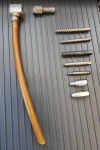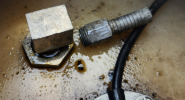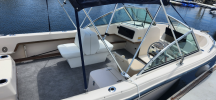Halfhitch
GreatGrady Captain
Tech dog, Don't get too concerned if you wind up spinning the fitting in the plastic. There are innumerable repair/replacement parts available. The field sprayer guys are constantly changing/adding input/output fittings in poly tanks. Not rocket science, just science in a different business. To make you feel braver before you wrench on your tank again, call an outfit that builds commercial sprayer tanks or an outfit that sprays fields or lawns and talk to them about your tank needs as far as diameter and the fact that it's gas. Don't worry about replacing the anti-siphon valve. Lawyers put those in your boat. Just a barb fitting is all you need. I think a 1/4 turn shut-off valve between the barb and the tank is a good idea.





